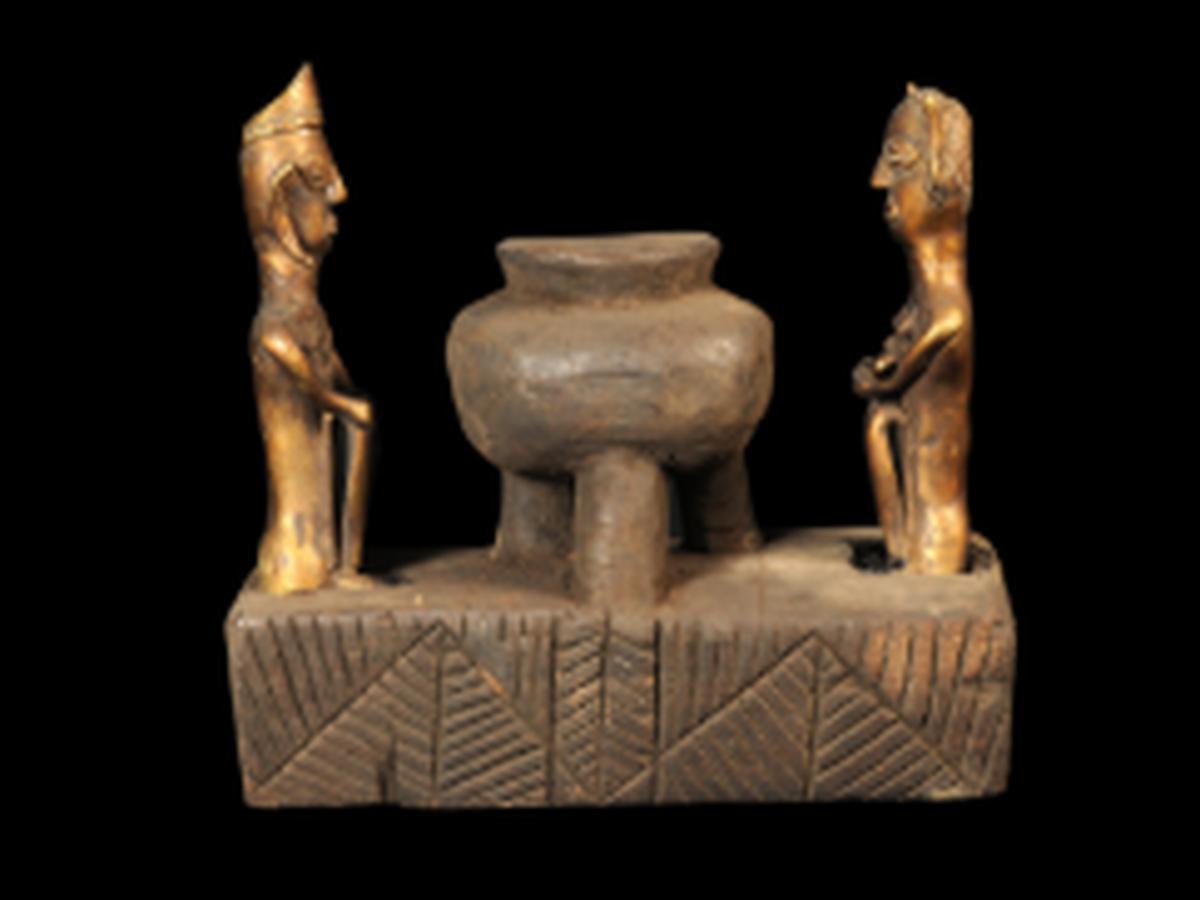State
Tribe Name
Art Type
short description
The Konyak Naga family of Nagaland in India has an excellent representation in this metal figure of a man, woman, and child, accompanied by a wooden pot, which is a great statement of family, fertility, and cultural continuity. The Mon district tribe being described is not only one defined by attachment to the warrior but has much more to tell, from its rich symbolic art, about life together, relationships, and rituals. Here, the sculpture representing an inseparable couple is a man and woman of metal seated on a wooden dais. The female is nurturing and breastfeeding a child, thus signifying motherhood, nurturing, and sharing lineage. The next figure is that of a man seated beside a female and equally representative of the protective and authoritative figure of a father, thus completing the apex of the triadic setup. Indeed, this trio becomes the very construct of great family value common to Konyak society, giving us a rare historical glimpse into domestic value contrary to the perhaps more warrior-themed portrayals of the tribe
Thumbnail

Filter Postion
Left
Filter Background
Off
Theme
Filter Header Image

content
Image

description
The Konyak Naga family of Nagaland in India has an excellent representation in this metal figure of a man, woman, and child, accompanied by a wooden pot, which is a great statement of family, fertility, and cultural continuity. The Mon district tribe being described is not only one defined by attachment to the warrior but has much more to tell, from its rich symbolic art, about life together, relationships, and rituals. Here, the sculpture representing an inseparable couple is a man and woman of metal seated on a wooden dais. The female is nurturing and breastfeeding a child, thus signifying motherhood, nurturing, and sharing lineage. The next figure is that of a man seated beside a female and equally representative of the protective and authoritative figure of a father, thus completing the apex of the triadic setup. Indeed, this trio becomes the very construct of great family value common to Konyak society, giving us a rare historical glimpse into domestic value contrary to the perhaps more warrior-themed portrayals of the tribe.
Between the two figures, there is a three-legged wooden pot, which may be a symbol of common provision, offering in a ceremony, or spiritual balance. In this perspective, such pot was perhaps used by the Konyak within some sacred connotation because rites or hearth as they would call it, considered 'sacred', is an essence of all family members and hence life. This, in general terms, is the affirmation regarding unity, fertility, and the sacred aspect of parenthood. Such an item might have been used in ceremonial observance, or else it could have been remembered by the tribal households and/or in special space set aside for ceremonies. Now residing in institutions like the Indian Museum in Kolkata, this object is part of the ethnographic collections preserving largely the social and spiritual values of Konyak Naga tribe, captured through expert craftsmanship and cultural symbolism
Between the two figures, there is a three-legged wooden pot, which may be a symbol of common provision, offering in a ceremony, or spiritual balance. In this perspective, such pot was perhaps used by the Konyak within some sacred connotation because rites or hearth as they would call it, considered 'sacred', is an essence of all family members and hence life. This, in general terms, is the affirmation regarding unity, fertility, and the sacred aspect of parenthood. Such an item might have been used in ceremonial observance, or else it could have been remembered by the tribal households and/or in special space set aside for ceremonies. Now residing in institutions like the Indian Museum in Kolkata, this object is part of the ethnographic collections preserving largely the social and spiritual values of Konyak Naga tribe, captured through expert craftsmanship and cultural symbolism
Image Mode
landscape
promoted
On
Verified
Off
